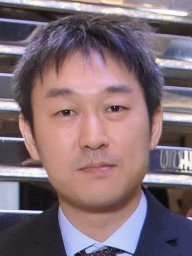Research Activities
Observed signals at microphones contain not only desired signals but also various unwanted noises, causing degradation in sound quality/intelligibility and performance of downstream systems, such as automatic speech recognition. To tackle this problem, we have developed signal enhancement techniques for removing various unwanted noises and obtaining the desired signals. These techniques include source separation (Refs. 1), 2)), which separates original source signals from mixed signals observed by microphones, diffuse noise suppression (Refs. 3), 4)), which suppresses noise arriving from many directions simultaneously (diffuse noise) such as air conditioning in an office or buzzing in a cafe, and dereverberation (Ref. 5)), which removes reverberation caused by sound reflections on the walls and ceiling. In addition, we have been working on direction-of-arrival estimation (Ref. 6)), which estimates the directions of sound sources, source number estimation (Ref. 7)), which estimates how many sounds should be separated in source separation, and diarization (Ref. 8)), which estimates "who spoke when" in conversational speech.
Moreover, we have been working on simultaneous tracking of the time-varying states of multiple concurrent signal sources from mixed signals observed by sensors (Ref. 9)).
Literature
- 1) N. Ito, R. Ikeshita, H. Sawada, and T. Nakatani, "A Joint Diagonalization Based Efficient Approach to Underdetermined Blind Audio Source Separation Using the Multichannel Wiener Filter," IEEE/ACM Transactions on Audio, Speech, and Language Processing, DOI: 10.1109/TASLP.2021.3079815, 2021.
- 2) N. Ito, S. Araki, and T. Nakatani, "Complex Angular Central Gaussian Mixture Model for Directional Statistics in Mask-Based Microphone Array Signal Processing," in Proc. EUSIPCO, Budapest, Hungary, Aug. 2016, pp. 1153 - 1157.
- 3) N. Ito, H. Shimizu, N. Ono, and S. Sagayama, "Diffuse Noise Suppression Using Crystal-Shaped Microphone Arrays," IEEE Transactions on Audio, Speech, and Language Processing, vol. 19, no. 7, pp. 2101 - 2110, Sep. 2011.
- 4) N. Ito, E. Vincent, T. Nakatani, N. Ono, S. Araki, and S. Sagayama, "Blind Suppression of Nonstationary Diffuse Acoustic Noise Based on Spatial Covariance Matrix Decomposition," Journal of Signal Processing Systems, vol. 79, pp. 145 - 157, May 2015.
- 5) N. Ito, S. Araki, T. Yoshioka, and T. Nakatani, "Relaxed Disjointness Based Clustering for Joint Blind Source Separation and Dereverberation," Proc. IWAENC, Juan-les-Pins, France, Sep. 2014, pp. 268 - 272.
- 6) N. Ito, E. Vincent, N. Ono, and S. Sagayama, "Robust Estimation of Directions-of-Arrival in Diffuse Noise Based on Matrix-Space Sparsity," Research Report, INRIA, RR-8120, hal-00746271, Oct. 2012.
- 7) N. Ito, S. Araki, and T. Nakatani, "Permutation-free Clustering of Relative Transfer Function Features for Blind Source Separation," Proc. EUSIPCO, Nice, France, Aug. 2015, pp. 409 - 413.
- 8) N. Ito, S. Araki, M. Delcroix, and T. Nakatani, "Probabilistic Spatial Dictionary Based Online Adaptive Beamforming for Meeting Recognition in Noisy and Reverberant Environments," Proc. ICASSP, New Orleans, USA, Mar. 2017, pp. 681 - 685.
- 9) N. Ito and S. Godsill, "A Multi-Target Track-Before-Detect Particle Filter Using Superpositional Data in Non-Gaussian Noise," IEEE Signal Processing Letters, vol. 27, pp. 1075 - 1079, Jun. 2020.
Other Activities
- 2021 - Guest Associate Editor in Signal Processing Theory, Frontiers in Signal Processing
- 2020 - IEEE Signal Processing Society (SPS) Audio and Acoustic Signal Processing (AASP) Technical Committee (TC) Member and EDICS Subcommittee Vice Chair
- 2021 WASPAA2021 area chair
- 2021 ICASSP2021 area vice chair (AUD-SEN)
- 2021.01 Tutorial speaker at EUSIPCO2020 (N. Ito and H. Sawada, "A Unified Framework for Underdetermined and Determined Blind Audio Source Separation," tutorial at EUSIPCO2020, Jan. 2021, available online at https://www.youtube.com/watch?v=atHaLR1P6iM.)
- 2013/2015/2016/2018 Fourth/fifth/sixth/seventh community-based Signal Separation Evaluation Campaign (SiSEC2013/2015/2016/2018) Committee Member
- 2010 LVA/ICA2010 Local Organisation Committee Member
- IEEE Senior Member, ASJ Member
Future Plan
We aim to advance development of theories and algorithms for weakly supervised machine learning with limited supervision and their application to real data processing such as acoustic signal processing.
Messages to Students
I aim to conduct groundbreaking research by integrating signal processing and machine learning. I am looking forward to discussing with creative students.
URL
http://www.ms.k.u-tokyo.ac.jp/ito/index.html

